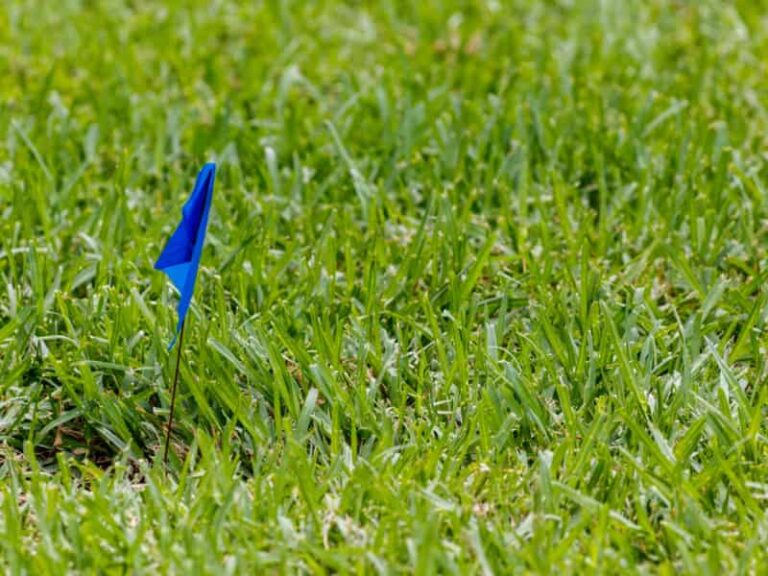Scalping Bermuda Grass: When, Why + How to Scalp Your Lawn
Do you have Bermuda grass growing on your lawn and are considering scalping to boost turf growth? Wondering what’s the best time of the year to do so?
Scalping is the process of deliberately mowing a lawn too low to get rid of thatching, but the process tends to expose grass shoot tissue as well. Bermuda grass is one of those few turfgrass species that can withstand scalping. Read on for a detailed guide on why you should scalp your Bermuda lawn, and the best time to do the same.
Is it necessary to scalp a Bermuda grass lawn?
Yes- it’s important to scalp a Bermuda grass lawn to boost spring growth and greening as the turf re-emerges from winter dormancy. When you intentionally scalp your Bermuda lawn, the soil becomes more exposed to sunlight. The resulting increased soil warmth helps boost root development and grass growth.
What’ more, scalping helps eliminate excessive thatching, hence allowing for improved penetration of air, water, and nutrients into the soil and the Bermuda root zone. Dethatching via scalping also helps with Bermuda lawn disease control, as the thatch layer traps moisture that can attract fungi and microbes.
When to scalp Bermuda grass
The best time of the year to scalp your Bermuda lawn is in early spring at the beginning of the growth season for warm-season turfgrasses like Bermuda grass. At around this time of the year, your Bermuda turf will be coming out of its dormant winter state and greening up again, and scalping will speed up the process.
What’s more, scalping is best undertaken when there’s no frost, as frosty conditions will inhibit Bermuda grass growth. The last frost usually occurs in spring, which is why we recommend scalping your lawn from early-mid April. Scalp any earlier and you might have to deal with damage due to frost. Scalp any later and your re-emerging Bermuda turf might miss out on the ‘healthy spring growth’ window.
It’s also advisable to scalp your turf only when it’s dry, as removal of wet grass clippings can be quite challenging and time-consuming. As such, you should avoid scalping your lawn immediately after a downpour, or after irrigating your Bermuda turf.
Moving on, you can also scalp your Bermuda lawn during fall, but only if you’re planning to overseed it with a cool-season turfgrass variety like annual ryegrass or perennial ryegrass. Scalping is usually undertaken prior to overseeding to remove excessive thatching and expose the topsoil for improved seed-soil contact that will facilitate more growth.
If you’re looking to scalp your Bermuda lawn in the fall prior to overseeding, we recommend waiting until soil temperatures drop below 60-degrees Fahrenheit. This is because it’s at this point that Bermuda turf growth stops and it goes dormant until the start of spring. Crabgrass and other annual weeds will also die in the fall so you won’t have to overseed a lawn full of weeds.
How low should you scalp Bermuda grass?
To scalp your Bermuda lawn, set the mower blade to the lowest mark on the mower. Most commercial mowers have a lowest setting of 0.5 inches. Such a low height from the ground ensures that thatching is eliminated, leaving the lawn more exposed to sunlight for improved grass growth and development. Unlike many other turfgrass species that won’t recover from such low scalping, Bermuda grass is scalp-tolerant and grows back healthier after being scalped.
How to scalp your lawn
To properly scalp your Bermuda lawn and boost new grass growth, consider the steps detailed below:
1. Prep your scalping/mowing tool
Lawn experts recommend scalping using a sharp mower blade, as a dull blade won’t give you a clean cut, instead leaving the edges of your grass blades with a ragged and torn appearance that can lead to browning. By scalping with sharp mower blades, you’ll end up with a nice-looking, green lawn with very few- if any- brown patches.
2. Scalp your lawn
After sharpening your blunt mower blade, turn on the mower and set it to its lowest mower setting at 0.5 inches. Proceed to scalp/mow the entire Bermuda lawn at this mowing height. Since bagging entails a lot of clean-up work afterwards, you may want to scalp half the lawn and complete the rest of it the next day.
When scalping through a hilly lawn, there’s higher chances of your blades digging into the topsoil and leaving behind unsightly, bare patches on your Bermuda lawn. To effectively scalp such lawn terrain without causing extensive damage to your turf, we recommend using a small lawn mower. Larger lawn mowers are harder to maneuver around uneven surfaces.
3. Ensure to bag the clippings
Unlike during regular mowing whereby grass clippings are usually left behind as mulching to provide nutrients for growth of the turf; doing so after scalping would beat the purpose of the whole process. Scalping is usually undertaken to dethatch the lawn, and leaving this layer of thatch on the lawn after scalping would mean that it’ll still continue stifling grass growth by smothering it. Attach a mower bag to your lawn to collect the thatching and clippings a you mow. Alternatively, you can use a rake or lawn sweeper post-scalping.
4. Aerate the lawn post-scalping
After scalping your Bermuda lawn, you should consider aerating it, as scalping/dethatching and core aeration go hand-in-hand. When dethatching is undertaken before aeration, the latter process becomes more efficient at relieving soil compaction, as it becomes easier to penetrate the topsoil with the aeration machine.
Scalping followed by core aeration is a great two-step combination for jumpstarting Bermuda grass for spring growth. To properly aerate your Bermuda grass after scalping/dethatching and relieve soil compaction, use a plug aerator instead of a spike aerator.
Will scalped Bermuda grow back?
Bermuda grass tends to grow back even after scalping since it grows by way of both above-ground stolons and underground shoots. Even if scalping causes tissue damage to the lateral stolons, the underground rhizomes will still produce new grass plants.
What’s more, the increased exposure to sunlight after scalping ensures that Bermuda roots grow deeper as the soil becomes warmer. Finally, if you scalp Bermuda grass during fall before overseeding with a cool-season grass, chances are there won’t be any negative effects on the Bermuda as growth will have already stopped by this time of the year.
What to do after scalping your lawn
After scalping your Bermuda turf, ensure to maintain a regular mowing schedule for the remainder of the growing season to maintain a lush, healthy turf. We recommend mowing at least once every seven days. Failure to mow regularly can affect lateral growth that facilitates turf thickness/density, resulting in thinning out of the Bermuda grass.
To properly mow your Bermuda lawn, consider the following:
- Avoid cutting off more than one-thirds of the length of the leaf blades when mowing your Bermuda lawn, as this will affect photosynthesis and grass growth. By leaving behind at least two-thirds of the leaf blade surface area, Bermuda grass can still efficiently carry on with photosynthesis.
- Avoid mowing in the same direction- every time you complete a mower pass through the length of your lawn, consider beginning the next pass from the opposite direction. This is done for aesthetical reasons, as mowing in the same direction will leave your Bermuda turf with ‘mower lines’.



